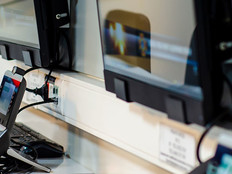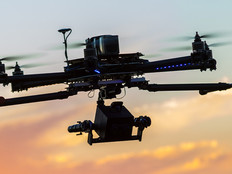Companies Tout Benefits of Upgrading to 5G Networks
Despite protests from some organizations, such as the AICC, AT&T maintains it has done about all it can to prepare customers, with at least three years’ notice of the change. The company also provided business customers more than $100 million in incentives to replace obsolete devices, Fierce Wireless reports.
AT&T has already migrated more than 37 million Internet of Things (IoT) devices off the 3G network and is willing to help those who have not yet fully migrated.
DIVE DEEPER: How the next generation of wireless will power the Internet of Everything.
The move to 5G will come with major benefits, especially for those wanting to implement IoT technology, according to Ray Dela Cruz, a CDW mobility expert. Among these is faster speed, which could improve inventory management for retailers and create shorter turnaround times for test results in the healthcare industry, for example.
5G “provides capabilities that organizations can use as a springboard for other innovative initiatives,” he writes. “Widespread deployment of driverless cars for delivery, for example, will require high-speed connectivity to transmit data and facilitate safety-oriented artificial intelligence. 5G can make that happen much more easily than the current standard.”
Underserved Communities Face Risk Without Assistance
As the South Dakota Public Utilities Commission points out, similar transitions have happened previously, including the sunset of 2G in favor of 4G.
“The best way to ensure you don’t lose connectivity as a result of these phase outs is to do your research and plan ahead. Contact your mobile provider or consult your provider’s website for more information about their 3G retirement plan and how it may affect your service,” said PUC Commissioner Gary Hanson in a press release. “Be sure to consider any medical devices, tablets, smart watches, vehicle SOS services, home security systems and other devices that use cellular connectivity as a back-up when a wired internet connection goes down and other connected products that may use 3G as well.”
LEARN ABOUT: How broadband expansion is helping reduce inequity.
“It’s a lot of everyday things and a lot of critical items,” Venkat Shastri, a professor of engineering and entrepreneurship at the University of San Diego, told ABC News 10 in an interview about the sunset. “This equipment, these technologies, have a much longer lifecycle than the lifecycle of a cellphone.”
And the sunset could hit underserved communities the most, where people and businesses don’t have the money to upgrade their technology, he said.
University of California San Diego faculty member Dinesh Bharadia, an assistant professor at the engineering school’s Center for Wireless Communications, said he recommends fccid.io as a good resource for individuals to find out what technology their devices support. The Federal Communications Commission also has information on rebate programs and how to prepare for the shift, he told the news channel.











